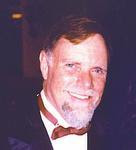I HAVE SEEN THE FUTURE proclaimed the small stickpin tin lapel buttons that were given out to patrons when they exited the General Motors Futurama pavilion at the 1939 World's Fair in New York City. Billing itself with the slogan, "The World of Tomorrow," the fair became a two-year celebration dedicated to the blessings of democracy and the wonders of technology, and it was this latter purpose, the apotheosis of technology, that captured the imagination of the fairgoers in a way unlikely to ever be seen again. During those two incredible years, sandwiched between a decade of economic hopelessness and the coming horror of the Second World War, it seemed for a brief moment that anything was possible.
The Futurama of General Motors which had been designed by futurist, Norman Bel Geddes, was meant to show the American landscape as it was predicted to look in the year 1960. Bel Geddes' vision of the future included 1,500-foot-high office buildings, taller than the Empire State Building constructed with lavish use of aluminum and glass, 14-lane superhighways that would allow a driver to travel coast-to-coast without stopping for anything but food and gasoline, and small individual vehicles capable of traveling by both roadway and air. Other components of future technology, envisioned in Futurama, told the people of that time what they could expect to see in the next 25 years. These anticipated marvels, prophesied in 1939, were realistically expected to exist in the early 1960s: the cautious but feasible use of atomic energy for power production, ubiquitous plastics, television sets in every home supported by a broadcast infrastructure, nylon stockings for women, rockets capable of orbiting above earth's atmosphere, radio telephones for occasional use in automobiles, aircraft capable of carrying 200 passengers at 400 mph, antibiotics, warships an eighth of a mile long, prefabricated low-cost houses, and fresh fruits and vegetables available at any time of year.
All of this predicted wonderment was set against the backdrop of an America that had the world’s greatest production capacity, on a planet that held only 2 billion human beings, all living in an atmospheric environment that had changed very little over the previous half million years. In that time of 1939, General Motors was the largest and richest corporation on the face of the earth.
Things can change dramatically in 70 years, in ways that could never have been envisioned back in 1939. The futuristic gizmos and products and developments came into being just as predicted, but along with them came environmental pollution and global population explosion and materialistic cultural changes that, arguably, made the world no better than it was back then. Today, when we talk about “The World of Tomorrow,” we don’t celebrate this vision with optimism and eager anticipation. In a way, the fate of General Motors serves as a kind of metaphor for everything else.
Subscribe to:
Post Comments (Atom)




No comments:
Post a Comment